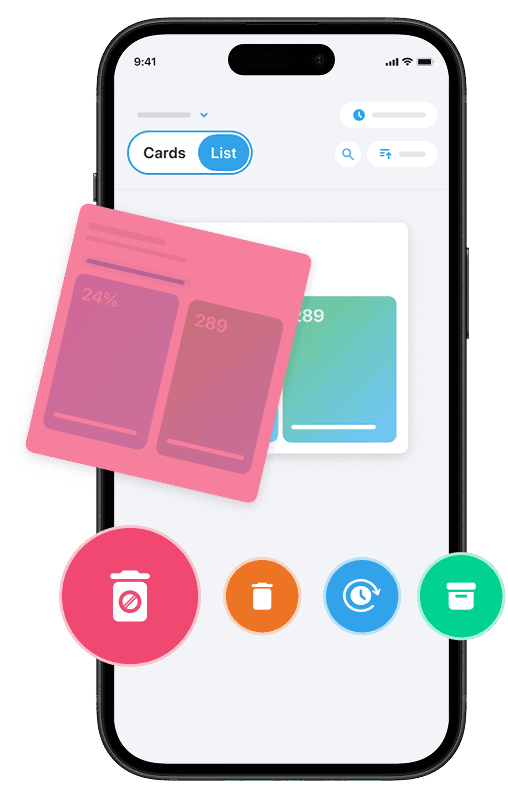Have you ever sent an email that was misunderstood, ignored, or caused confusion? You’re not alone. Many are seeking ways to improve email clarity. In a fast-paced digital world, writing clear and effective emails is more important than ever—especially in the United States, where email is the primary form of professional communication.
Whether you’re communicating with clients, coworkers, or support teams, improving the clarity of your emails can save time, prevent mistakes, and enhance your overall communication. In this guide, we’ll show you how to write better emails by focusing on clarity, structure, readability, and precision.
You can also use Cleanfox to quickly clean up email spam and declutter your inbox.
1. Define the Purpose of Your Email
Before you begin writing, ask yourself: What is the goal of this email? Are you asking for something? Providing an update? Sharing instructions? When you know your purpose, your email becomes easier to structure and more effective for the reader.
Start with a sentence that clearly explains the reason you’re reaching out. This helps the recipient know what to expect and how to respond. Clear communication begins with clear intent.
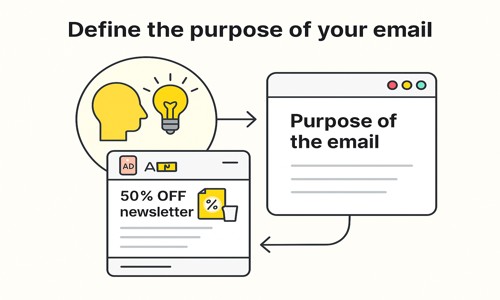
2. Use a Direct and Descriptive Subject Line
Your subject line is the first thing people see. It should be concise, clear, and specific. Avoid vague titles like “Update” or “Question.” Instead, try “Meeting Agenda for April 15” or “Quick Request: Budget Approval Needed.”
A good subject line improves open rates and helps the reader prioritize your message. It’s a small change that boosts clarity instantly.
3. Write in a Clear, Conversational Tone
Emails don’t have to sound like formal business letters unless your industry demands it. Use a friendly but professional tone. Avoid overly complex words or jargon unless necessary. When in doubt, write the way you’d speak in a polite conversation.
Clear writing is not about sounding smart—it’s about being understood.
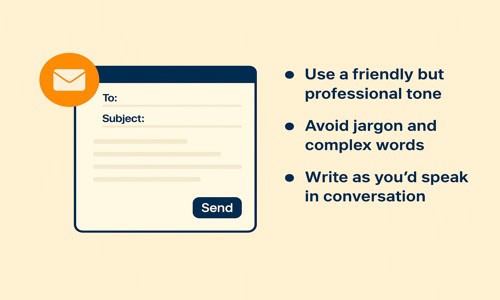
4. Keep Sentences Short and Concise
Long sentences make your email harder to read and reduce readability. Try to keep your sentences under 20 words when possible. Use short paragraphs with line breaks to improve structure and make your message more scannable.
For example:
Before: “We are writing to inform you that the meeting which was originally scheduled to take place on Monday has been rescheduled to Wednesday at the same time.”
After: “The Monday meeting has been moved to Wednesday at the same time.”
5. Focus on One Topic per Email
If your email includes multiple unrelated points, the recipient might miss something important. To improve clarity, write separate emails for unrelated topics. If that’s not possible, use bullet points or numbered lists to clearly separate ideas.
This approach improves both precision and effectiveness.
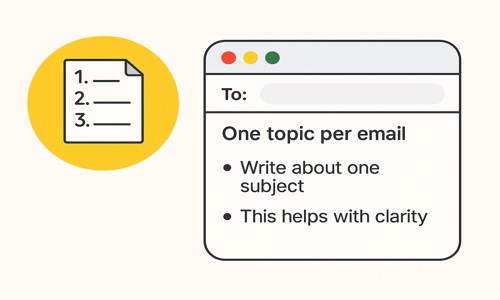
6. Use Headings and Bold Text to Guide the Reader
When writing longer emails, structure matters. Use headings or bold labels like “Next Steps,” “Important Dates,” or “Action Required” to highlight key parts. This improves readability and helps the recipient find the most relevant information fast.
7. Be Specific and Avoid Ambiguity
Vague language leads to confusion. Always include specific details like names, dates, times, and action items. For example, instead of saying “Let’s meet soon,” write “Let’s meet Wednesday at 2:00 PM in the conference room.”
Clear details reduce back-and-forth and improve communication.
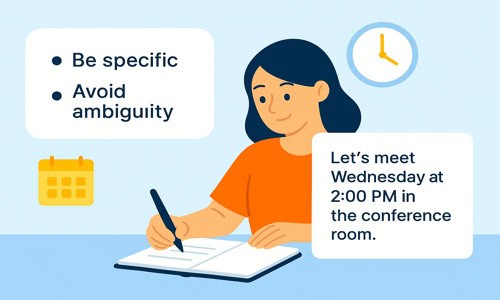
8. Review for Grammar and Tone
Proofread before sending. A quick review can catch grammar issues and unclear wording. Also, check your tone—especially if you’re writing about a sensitive issue. You can use tools like Grammarly or Hemingway to improve your email writing and ensure clarity.
9. Include a Call to Action (CTA)
Make sure your reader knows what to do next. If you need a reply, feedback, or confirmation, say it clearly. Use action words like “please confirm,” “reply with your availability,” or “click the link to approve.”
Clear CTAs improve the effectiveness of your email and help move things forward. Here’s a perfect example of a Cleanfox CTA you can use for free.
Say goodbye to spam, clutter, and chaos.
Our smart email cleaner filters out junk, organizes your inbox, and helps you focus on what really matters.
✅ Block spam automatically
✅ Organize emails by priority
✅ Keep your inbox clean
✅ Clean old emails you don’t read
📱 Available on the App Store and Google Play.
10. Edit for Conciseness
After writing your email, take a minute to trim unnecessary words. Ask yourself: Can I say this more simply? Is this sentence needed? Removing fluff improves clarity and keeps the reader’s attention.
Example:
Wordy: “I just wanted to quickly follow up and see if you had any time to look over the file I sent last week.”
Concise: “Have you had a chance to review the file I sent last week?”
11. Organize with Logical Structure
Start with the main point, then add supporting details. Use bullet points, spacing, and subheadings to separate sections. A logical flow improves readability and helps the reader stay focused on what matters most.

12. Use Plain Language Over Technical Jargon
Unless you’re writing to someone in your field, avoid technical terms. Plain language is easier to understand and improves communication across all levels—especially when emailing clients or cross-functional teams.
13. Add Visual Cues When Necessary
If you’re explaining something complex, visual structure can help. Use:
- Bullet points
- Numbered steps
- Short paragraphs with spacing
This makes your email easier to read and helps the recipient quickly understand the key points without having to reread or decode dense blocks of text.

14. Always Include a Professional Signature
End every email with a signature that includes your name, title, and contact info. This builds trust, adds context, and improves clarity—especially for new contacts or external communication.
15. Read It Out Loud (or to Yourself)
This simple trick reveals awkward phrasing or long-winded sentences. If it sounds confusing when read aloud, rewrite it. Clear writing often “sounds” clear too.
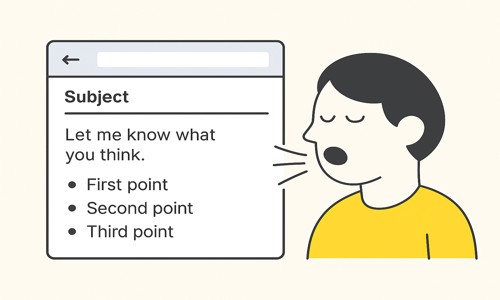
Why Clarity Matters More Than Ever
In 2025, our inboxes are full, and attention spans are short. Clear emails help you stand out, build trust, and get things done. Whether you’re writing for business, school, or personal reasons, improving clarity will make your emails more impactful.
Final Thoughts ✅
If you’ve ever asked yourself, “How can I improve the clarity of my email?” — now you’ve got your answer.
It all starts with a clear purpose, a logical structure, and language that’s simple and direct. Add in proper formatting — like bullet points, short paragraphs, and specific details — and your message becomes instantly easier to follow.
Clarity isn’t just a bonus; it’s the difference between being ignored and being understood. The more you apply these tips, the sharper and more professional your emails will become.
Great communication starts with great emails. So start leveling yours up — today.
Want to dive deeper? Check out our blog for tips on writing better emails, cleaning up your inbox, and staying productive with Cleanfox.



